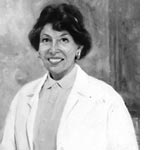 |
 |
|
 |
 |
 |
 |
 |
|
 |
 |
 |
 |

Friday Evening Lecture Series
08/19/11
Lillie Auditorium, 8:00 PM
Sager Lecture - "Revisiting the Heuser and Reese Synapse in the 21st Century: Do Nerve Cells Kiss?"
Erik Jorgensen, HHMI/University of Utah, Salt Lake City
Introduction by David Raible
Lecture Abstract:
In 1973 the most important experiment in the study of neurotransmission was conducted at the Marine Biological Laboratory in Woods Hole by John Heuser and Tom Reese. These experiments demonstrated that neurotransmitter release involved the fusion and recycling of membrane-bound vesicles. But at the same time, it launched a controversy that is unresolved today – do vesicles collapse into the membrane and then are recycled slowly by building a clathrin scaffold around them? Or do they retain their existence – and their relationship with the membrane is no more than a ‘kiss and run’? Since then, molecular pathways for fusion and recycling have been put forward, but the field remains divided. The existence of molecular models allows us to revisit the controversy and test these models by studying mutants that lack the relevant molecules. For the last four years, we have been spending summers at MBL building an instrument to reproduce and extend the famous Heuser and Reese experiment. And we are now poised to revisit and resolve this abiding controversy in neuroscience.
Dr. Erik Jorgensen is currently an investigator with the Howard Hughes Medical Institute, and is a Professor in the Department of Biology and an Adjunct Professor in the Departments of Human Genetics and Bioengineering at the University of Utah. He received a B.S. at the University of California, Berkeley and a Ph.D. in Genetics from the University of Washington, Seattle. At the University of Utah, Jorgensen received a Student Choice Teaching Award in 2004 and a Distinguished Scholarly and Creative Research Award for 2011. He also received the Jacob Javits Award from the National Institute of Neuronal Disease and Stroke, NIH (2003-2010) and was a 2008 Dart Scholar in Learning and Memory at the MBL.
Dr. David Raible will introduce Dr. Jorgensen. Dr. Raible is a professor at the University of Washington School of Medicine and co-director of the MBL’s Zebrafish Development and Genetics course. He is currently researching the genes and compounds that alter hair cell replacement after damage, and the genetics of zebrafish hair cell toxicity. Dr. Raible received a B.A. from Cornell University and completed his Ph.D. and postdoctoral work in Neuroscience at the University of Pennsylvania. He is a member of the Society for Neuroscience, the Society for Developmental Biology, and served as the chair of the NIH Review Panel of the Neurogenetics in Cell Fate study section. Dr. Raible serves on the editorial board of several journals including Developmental Dynamics, Developmental Biology, and Development.
 About the Sager Lecture About the Sager Lecture
Dr. Ruth Sager was chief of cancer genetics at the Dana-Farber Cancer Institute and a professor at Harvard Medical School where she was an acknowledged expert on suppressor genes and their relation to breast cancer. Dr. Sager was the author of more than 200 scientific papers on cancer genetics and the existence of DNA outside of cell nuclei, her first field of research, which she pursued through the study of algae. In 1988, Dr. Sager received the Gilbert Morgan Smith Medal in phycology. This medal is awarded every three years in recognition of excellence in published research on marine or freshwater algae. After switching her field of study to breast cancer in 1972, she received a Guggenheim Fellowship and studied the disease for a year at the Imperial Cancer Research Fund Laboratory in London, England. Dr. Sager graduated from the University of Chicago. She earned a master’s degree at Rutgers University and a doctorate at Columbia University. Dr. Sager was elected to the National Academy of Sciences in 1977. She was a professor at Hunter College until 1975, when she joined Harvard Medical School and the Dana-Farber Cancer Institute. Her cancer research involved the identification of more than 40 possible tumor suppressor genes with implications in the diagnosis and treatment of breast cancer. She also proved “by persistent counterexample, where originality leads,” according to the University of Chicago Magazine article, published in 1994 when she was named alumna of the year. Dr. Sager died of cancer in March, 1997, at the age of 79.
|
| |
  |
|
 |
 |
|